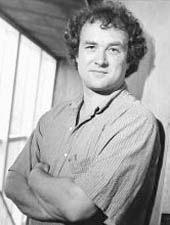Tiganis, T., Bennett, A. M., Ravichandran, K. S., Tonks, N. K. (March 1998) Epidermal growth factor receptor and the adaptor protein p52(Shc) are specific substrates of T-cell protein tyrosine phosphatase. Molecular and Cellular Biology, 18 (3). pp. 1622-1634. ISSN 0270-7306
Preview |
PDF (Paper)
Tonks Molecular & Cellular Biology 1998.pdf - Published Version Download (5MB) | Preview |
Abstract
T-cell protein tyrosine phosphatase (TCPTP) exists as two forms generated by alternative splicing: a 48-kDa endoplasmic reticulum (ER)-associated form (TC48) and a 45-kDa nuclear form (TC45). To identify TCPTP substrates, we have generated substrate-trapping mutants, in which the invariant catalytic acid of TCPTP (D182) is mutated to alanine, The TCPTP D182A substrate-trapping mutants were transiently overexpressed in COS cells, and their ability to form complexes with tyrosine-phosphorylated (pTyr) proteins was assessed, No pTyr proteins formed complexes with wild-type TCPTP. In contrast, TC48-D182A formed a complex in the ER with pTyr epidermal growth factor receptor (EGFR), Ln response to EGF, TC45-D182A exited the nucleus and accumulated in the cytoplasm, where it bound pTyr proteins of similar to 50, 57, 64, and 180 kDa. Complex formation was disrupted by vanadate, highlighting the importance of the PTP active site in the interaction and supporting the characterization of these proteins as substrates. Of these TC45 substrates, the similar to 57- and 180-kDa proteins were identified as p52(Shc) and EGFR respectively, We examined the effects of TC45 on EGFR signaling and observed that it did not modulate EGF-induced activation of p42(Erk2), However, TC45 inhibited the EGF-induced association of p52(Shc) with Grb2, which was attributed to the ability of the PTP to recognize specifically p52(Shc) phosphorylated on Y239. These results indicate that TC45 recognizes not only selected substrates in a cellular context but also specific sites within substrates and thus mag regulate discrete signaling events.
Actions (login required)
 |
Administrator's edit/view item |


